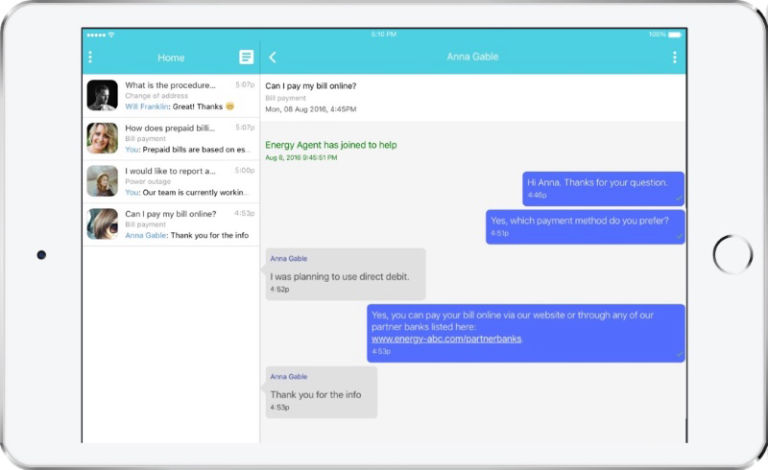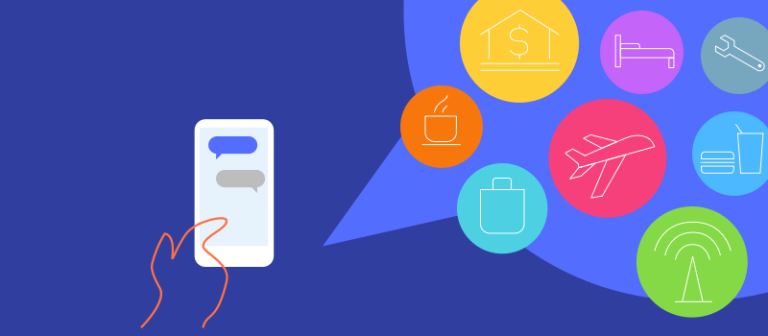Receiving (too) many calls to your Call Center?
Solving Problems with Brandchat Series
In this new series called "Solving Problems with Brandchat", we will try to pinpoint some common challenges businesses are facing today, and how Brandchat may be able to help in dealing with some of them.
Challenge 1: Receiving (too) many calls to your Call Center
The first challenge we are tackling is related to brands and businesses receiving many - or too many - calls to their call center. Whether internal or external, call centers generally operate on the basis of receiving calls and answering questions, one caller at a time. We all know that these conversations can last for 10, 20 and sometimes even 30 minutes or more. If we assume that each agent takes 20 minutes per caller, that basically means one agent can handle an average of 3 calls per hour.
Brandchat handles the whole process of communication slightly differently. When a person wants to contact a brand via Brandchat, the normal flow goes something like this:
- Open the Brandchat App
- Find and click on the Brand's logo
- Start typing in the question
Putting your FAQs to better use
When a user starts typing in a question, before an agent is even engaged, a list of suggested answers is shown to the user, based on the keywords entered. Sounds familiar? Yes, Brandchat optimises the use of the FAQs you've painstakingly collected and added on to your website (which bafflingly, some people refuse to look up). Finally, your FAQs will now be put to great use as the suggested answers to questions that are being typed in.
The impact also is that if the suggested answers are found to be useful to the asker, they may no longer need to chat to your agent/ representative. This reduces stress on the call centre/ helpdesk/ general phone line while, at the same time, eliminates any potentially negative experience the caller may have had towards your brand (had they, say, been put on hold for 10 minutes, merely to get a simple question answered.)
Optimise Flow With Automated Bots
Very often, a company may have to answer questions that are simple in nature but tedious as they always require the same mechanism and process. For example, if you are running a business where you deliver items to customers, the customer may be inclined to call you to check on their order status. Even if you already have an online web system where a customer can login to check, they may still opt to call up instead.
Bots are Micro Apps within Brandchat
One feature that we have just introduced to Brandchat is Brandchat Bots. We have effectively opened our app, and enabled you, brand owner, to build your own micro apps "within" Brandchat chats. There is going to dedicated series of blog posts on Brandchat bots, but for now, complete source code and documentation on how to build your own bot is available on Github where you can download it and follow instructions on how to build your own bots. Getting simple bots up and running can be done in a matter of minutes/hours. It's super easy and instructions are all available on Github.
Now, if you have 100 calls a day customer calling about status of their order, perhaps it's time to give out Bots a chance. If you build one, and if properly done, Bots can answer hundreds of customers in one minute effectively releasing your agents to focus on those who called.
One Brand Agent, Multiple Concurrent Questions
When calling contact center, as we already mentioned above, once person calls, agent answers and during this call, no other person can speak to this agent. That is, new callers are either put on hold (if there are no free agents available (how many times did we hear message on the phone saying "All our customer service agents are busy... please wait". Anyway) or asked to call later or leave a message. This is assuming all the lines are busy. Lets assume company has 10 agents handling lines. At any given point, maximum amount of cases or callers that can be handled is 10. Each caller is assigned to one agent. Only when agent hung up with one caller, 11th caller can fill it's place. This process is very "synchronous". If you are a software engineer, you will remember times when systems were processing instructions one-at-the-time. It was slow. This is long before we got ourselves "parallel processing" powers.
Let us image a scenario where 10 customers are sending new question to your contact center. Also, let's image there is only ONE person there. All customers are able to submit the question without waiting, all the questions are displayed to the agent to handle. With simple click of the button, agents can switch between questions handling all of them in parallel. This is particularly important as person who is asking the question may ask a question and focus on something else while waiting for the answer. ON the other hand, once agent answers the question, person who asked the question may now be too busy answering back to the agent opening the possibility for the agent to handle other cases during this "lul" in conversation. This tremendously increases case count of how many cases one agent can handle per hour.

Although this last one is not necessarily "reducing" number of "calls" as our Title of the blog suggest, it does create environment where smaller teams can handle more cases resulting in better productivity of those teams.
Convinced it may work for your brand?
This just shows a few ways Brandchat can help in reducing number of cases or calls businesses receive and have to handle. Feeling like coming on board of Brandchat? It is easy and your brand can be online in matter of minutes (subject to our approval and terms).



